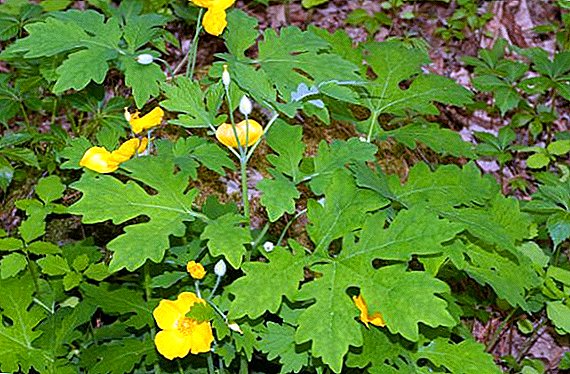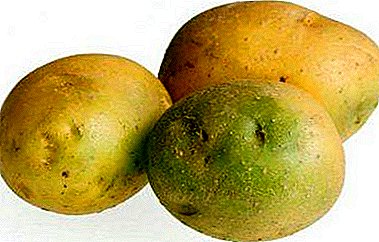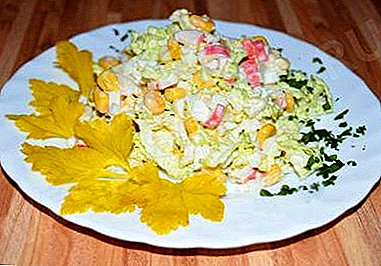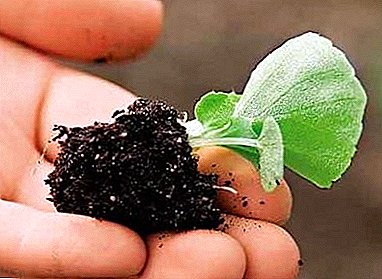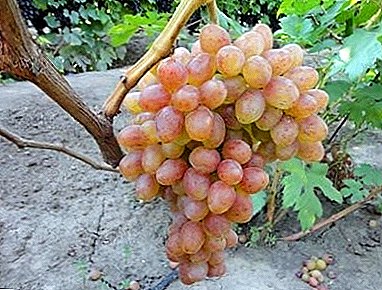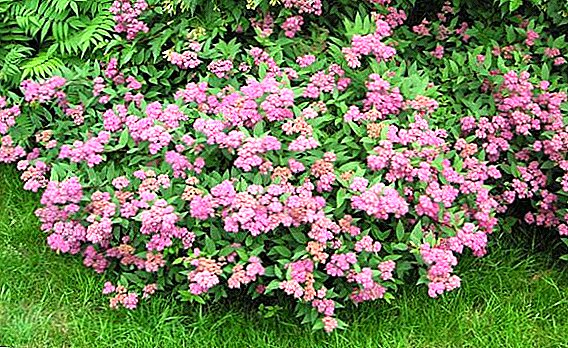 Spirea genus is a valuable gift of nature for landscape design. Each member of this genus has something to surprise: the shape of the bush, the color of the branches, the leaves, the shape and color of the inflorescences. The most fastidious gardener will find a variety that satisfies his needs.
Spirea genus is a valuable gift of nature for landscape design. Each member of this genus has something to surprise: the shape of the bush, the color of the branches, the leaves, the shape and color of the inflorescences. The most fastidious gardener will find a variety that satisfies his needs.
Planting spirea at the dacha
Gray spirea is a shrub that is characterized by rapid growth and long flowering (up to one and a half months). Begins to bloom in early May with snow-white small flowers. Inflorescences are located so often that the bush from a distance seems to be covered with snow.
Optimum landing times
 Spireas are not capricious plants, they are planted in spring and autumn. In the spring, the bushes are planted before buds bloom. For spring planting are suitable plants that bloom in summer. For autumn plantings, the period of flowering does not play a role, it is important to have time to plant before the leaves fall.
Spireas are not capricious plants, they are planted in spring and autumn. In the spring, the bushes are planted before buds bloom. For spring planting are suitable plants that bloom in summer. For autumn plantings, the period of flowering does not play a role, it is important to have time to plant before the leaves fall.
The most suitable weather for a good survival of ornamental shrub spirea is overcast even better with drizzling rain, day.
How to choose and prepare a seedling for planting
When buying a spirea, you need to choose a sapling with closed roots or with a lump of soil on them.
The seedling should not have leaves and too branched stems. If you take a sapling in a pot, see if the roots have sprouted through the drainage holes. In this case, you are offered an old plant with a strongly expanded root system and, most likely, its survival rate will be very low.
If the seedling roots open, make sure of the following:
- The roots must be flexible and wet,
- If there are cuts (which is undesirable), they should not be black,
- Stems should be flexible, green, have live buds.
Soil preparation and proper planting seedlings
 Spirea loves nutritious loose soil. If the soil is heavy, dilute it with leafy or soddy soil; clay soil - peat or sand. Spirea bushes feel good with moderate humidity, so drainage is necessary when planting. It is better to choose an open sunny area for spirea and in the penumbra the plant produces fewer flowers, although the inflorescences are brighter.
Spirea loves nutritious loose soil. If the soil is heavy, dilute it with leafy or soddy soil; clay soil - peat or sand. Spirea bushes feel good with moderate humidity, so drainage is necessary when planting. It is better to choose an open sunny area for spirea and in the penumbra the plant produces fewer flowers, although the inflorescences are brighter.
Important! Spirea needs a large area, since its root system is growing strongly.
Spirea is well co-located with coniferous ornamental trees and bushes: thuja, spruce, juniper. For planting, spireas make a pit with vertical walls a third more deep than a lump on the sapling root system. It is advisable to dig a hole two days before planting. At the bottom of the stack is laid drainage layer of 20 cm, and the earth dug from the pit, mixed with fertilizer.
Before planting the roots straighten, long and dried pruned. On the drained bottom piled a hill of soil, put a sapling, straighten the roots and fall asleep in half. Now you need to pour at least a bucket of water and fall asleep until the end. When moisture is absorbed, the seedling gently tightens up, so the roots take a comfortable position. At the end of the procedure, the soil around the trunk should be compacted, watered and dusted with mulch to preserve moisture.
Subtleties care spiraea
Caring for spirea does not require much knowledge and effort, the main subtlety lies in the rules of trimming.
Watering and loosening the soil
 Watering the plant is not often, but abundant. You can water twice a month, one and a half buckets of water under a bush. If there is no rain, watering increases up to two times a week.
Watering the plant is not often, but abundant. You can water twice a month, one and a half buckets of water under a bush. If there is no rain, watering increases up to two times a week.
Be sure to weed and loosen the soil around the bush. When loosening the soil is saturated with oxygen and nutrients, weeding is removed during weeding. Spirea bushes have roots close to the surface, therefore after each watering there is a need for mulching.
Top dressing and fertilizer of the soil
Mandatory dressing after spring pruning and before flowering. To do this, use a cow infusion with superphosphate (for one bush enough to add 8 g). You can use chicken dung, but if you can’t get organic manure or dung, use the Kemir Universal granular composition - 90 g / sq.
Trimming Spirea Gray
Gray spirea blooms early, its buds are formed along the entire length of the stem, so there is no need to prune every spring. Remove only frozen sections of branches.
Attention! If you cut live buds, there will be no flowering. In the first spring pruning, weak and interfering shoots are removed, shortened to the location of large buds.
The aging, dry or damaged shoots, branches growing inside the bush or hindering the growth of strong fruit-bearing branches are removed annually. Spiraea pruning older than four years is carried out annually. Such bushes are cut, leaving a 30-centimeter bush from the surface of the ground. Poor development of new shoots after pruning or lack of it suggests that it is time to divide the bush and transplant it.
Spirea frost resistance
 Spirea easily tolerates harsh climate, it is not afraid of even extreme cold. The only thing that is bad for her is sudden temperature changes. Protect from frost need young plants in their first wintering. To do this, the near-stem circle is mulched with peat, covered with dry foliage and spruce leaves. Saplings planted before winter should preferably be covered with a plastic bottle trim.
Spirea easily tolerates harsh climate, it is not afraid of even extreme cold. The only thing that is bad for her is sudden temperature changes. Protect from frost need young plants in their first wintering. To do this, the near-stem circle is mulched with peat, covered with dry foliage and spruce leaves. Saplings planted before winter should preferably be covered with a plastic bottle trim.
The use of spireas in a garden landscape
These shrubs are suitable for any composition. How to plant spiraea on your site depends on the flight of your imagination. Since the spirea gray blooms early, it looks great next to daffodils, tulips, primroses and other early flowers. White inflorescences make it possible to combine spiraea with any bright flowering plants, plant it in the center of coniferous groups, and place it between bright lilac bushes.
If there is an artificial reservoir on the site, a spirea can be planted on its bank. She is beautiful in rock gardens, rockeries and parks. Spiraea is often planted along alleys and garden paths. A fence from a spirea planted on the plot will perform both a decorative function and a fence function. Spirea can revive a plot of a garden or park with stone slides and compositions.
Spirea breeding
Spirea gray is a hybrid variety, therefore it is not propagated by seeds. It is better to use the vegetative method.
Layering
 Reproduction by layings is carried out in the spring. A couple of twigs are bent to the ground and placed in a furrow dug in advance. Pinch the top sticking out above the surface, and the part of the shoot remaining in the furrow can be fastened with wire clips. Cover the layers with earth. For the winter, it should be covered with mulch and dry leaves, and in the spring it should be separated from the donor and transplanted.
Reproduction by layings is carried out in the spring. A couple of twigs are bent to the ground and placed in a furrow dug in advance. Pinch the top sticking out above the surface, and the part of the shoot remaining in the furrow can be fastened with wire clips. Cover the layers with earth. For the winter, it should be covered with mulch and dry leaves, and in the spring it should be separated from the donor and transplanted.
Spirea transplant according to the rules of planting: choose a place, prepare the ground.
Interesting! Spiraea is a source of salicin glycoside. As a result of chemical treatments, this component is converted to medical aspirin.
Division of rhizome
Rhizome division is practiced in the fall. The bush is carefully dug out, the stuck clumps of soil are shaken off to see the points of division. It is necessary to divide so that each bush has at least two strong shoots and strong, healthy lobe of the roots. Drainage and watering are necessary when planting. The size of the pit is calculated taking into account the old hole.
Cuttings
Propagation by spirea with gray cuttings is also carried out in autumn, after flowering. Chopped cuttings are placed in peat or sand under a plastic bottle cap. To enhance rooting, the tip of the cutting can be put in water for six hours with the addition of "Epin." Before planting, sprinkle with a slice of "root" and plant cut down. Planted cuttings for the winter should be covered with plastic caps and powdered with dry foliage.
How to protect against pests and diseases, treatment of spirea
Spirea bushes love snails, to prevent them from appearing on the plant, spray it with a phyto-farm after flowering.
Did you know? Snails, harmless in appearance, can greatly harm humans and animals. In the spring, these sluggish creatures carry with their mucus tapeworms and worms.
 They attack spirea in the garden and such pests as aphid and spider mites. Harm brought by aphids is the sucking of nutrients from the leaves of the plant, green shoots and emerging pedicels.
They attack spirea in the garden and such pests as aphid and spider mites. Harm brought by aphids is the sucking of nutrients from the leaves of the plant, green shoots and emerging pedicels.
When it appears, you can use folk remedies: infusion of celandine, hot pepper, garlic or wormwood. You can buy in the store universal tools that are suitable for dealing with caterpillars: "Actellic", "Pirimor", "Bitoxibacillin" other.
Spider mites damage the leaves of the plant with their presence and vital activity. The affected leaves turn yellow, dry and die. To combat ticks suitable means such: "Karbofos", "Fosfamid", "Fozalon" and "Akreks". For the treatment of fungal diseases such as Septoria, ascochitis, Ramulariosis, will fit "Fundazol"Bordeaux liquid and colloidal sulfur.
Thanks to its resistance to cold spirea is available for gardeners of all regions. Its variety in terms of flowering allows you to admire the flowers all spring and summer and autumn seasons.




